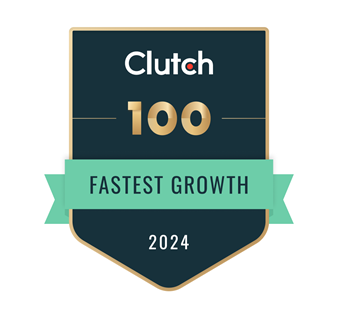Unleash the Power of Open-Source Content Management Systems
In today’s digital era, content is king, and managing it effectively is crucial for any website’s success. This is where a Content Management System (CMS) becomes a game-changer. A CMS is a web application that makes content creation, management, and editing accessible, without needing extensive technical knowledge. It's particularly beneficial in managing dynamic web content and offers various functionalities through plugins, modules, and themes, enhancing your website without heavy lifting on your part.
This article aims to clarify the concept of Content Management System, highlight benefits of open-source CMS, and guide you in selecting the perfect CMS for your needs.
What are Open Source CMS?
In the data management field, content management systems (CMS) refer to web applications that provide the ability to create, edit, and manage HTML (and other) web content while using a database (typically MySQL). In general, content for a website is created and edited within an administrative section of the site (often referred to as the backend), and this content is then presented to visitors via an interface resembling a regular website (often referred to as the frontend).
By adding extra code, called plugins, modules, and extensions, most Content Management Systems can extend their functionality. Adding these to your website will enhance its functionality without taking a lot of your time. Experienced dot net developer knows how to extend functionality of your open source CMS.
As for themes, they are also available with most CMS. Essentially, these are the "clothing" of your CMS. Your website's appearance and functionality are determined by them. In general, themes vary from one CMS to another, but in general, most include a few .php files and .css files that work in conjunction with the core system to ensure that your site's overall appearance matches the theme.
Let's think about 'open source' for a moment. The bottom line is that open source means it is FREE, which is probably all that really matters to most people! However, there is so much more to it than just that!
The source code of an open source project is available for download, modification, and use. It is often the case for developers to make their product open source so other developers can use their design and improve it. To help the project flourish and grow, these improvements are then incorporated into future versions of the "code." An open-source CMS can therefore be used and improved by anyone, free of charge.9 Must-Have Open-Source CMS Features
We are living in a content-driven world. If you need to attract your audience you need to deliver fresh and engaging content periodically. This is where CMS can help. In the world of technology there is nothing called a perfect CMS. There is only CMS that is perfect for you. In this part of our blog post let’s explore the best features of modern CMS.
- User-friendliness of CMS
To ensure that a Content Management System (CMS) serves both your audience and your team effectively, prioritizing user-friendliness is critical. A CMS designed with a clear, simplified layout, straightforward controls, and search functionalities allows for ease of use across the board. Such an environment empowers your team to quickly adapt and take charge of their respective areas and significantly boosts overall efficiency and productivity. This approach to CMS design not only streamlines the management of content but also ensures that all users, regardless of their technical skills, can navigate and contribute with confidence and ease.
- Customization
Customization allows you to make your website stand out in the digital landscape by adjusting the layout for improved navigation, integrating specific functionalities for better content management, and making design tweaks that reflect your brand identity. It transforms a generic platform into a tailored digital experience that enhances user engagement and streamlines workflow.
- Security
As technology is growing, cybercrime has become a serious threat. Malicious codes and scripts, unauthorised access, data integrity violations are some of the common cybercrime methods which any CMS needs to be protected from.
A robust security system has now become a necessity. Many security plugins are now available which you can integrate into your CMS system which can really protect your site from malicious scripts.
- Comprehensive Search
Your website needs to have a comprehensive search mechanism. If your customer is looking for a specific solution and for a specific problem, and your platform gives it to them easily without browsing the entire site, you will drive more traffic. Search has to be in-depth, fast, and hassle-free to use. There can be a drilled down approach while you are implementing the search engine CMS. The drill-down approach is the approach when you have the main subjects on top. If you click, it will drill down, and if you are zooming, something of that sort makes more sense when it comes to the search facility.
- Search analytics
A content management system that has built-in analytics helps content creators, brand managers, sales and marketing teams in knowing visitor trends. This gives them the opportunity to optimise their marketing and content strategies according to user behavior.
- Publishing tools
Let’s not forget, it will also handle content tagging, SEO, adapting videos and images and more from within the publishing interface. We have built-in SEO tools, which will help you automatically create URLs that will work both for search engines and your readers.
The on-page search engine optimization techniques such as adding appropriate page titles, META descriptions, and alternatives tags for images, avoiding plagiarism, etc. can be handled by adding the appropriate tools that can be used for SEO.
- Publishing tools
The other feature CMS must have is multi-platform integration. This has become a must-have feature now-a-days. Every organization would want to grow and take their product/service on multiple platforms. It can be another site or multiple screen experience such as mobile devices, tables, AR/VR etc.
A system capable of handling all these from one place is desirable rather than having a separate CMS for each of them which will consume more time.
- Quick rollback options with Versioning
From our perspective, this is a very important point. What happens if you delete or create something by accident? You would want the system to roll back to the last saved state relieving you from the stress of going all over again.
Earlier versioning was one an enterprise-level tool but now more and more content management systems are equipped with it. So you can certainly look for CMS which can have various levels of versioning and should have a point when you can choose to roll back at that point.
Earlier versioning was one an enterprise-level tool but now more and more content management systems are equipped with it. So you can certainly look for CMS which can have various levels of versioning and should have a point when you can choose to roll back at that point.
- Lighting-fast support
Prioritizing a CMS with accessible support is critical if your organization is not specialized in IT and does not have an in-house team to handle CMS-related issues. While many open-source CMS platforms may offer limited support, having access to an active community, comprehensive documentation, and third-party support services is essential.
In scenarios where specialized support is required, partnering with a provider like Bits Orchestra can bridge the gap and provide expert guidance to effectively navigate any technical challenges. This ensures that your website remains operational and efficient, regardless of the complexities you may face.
It is also important to consider features such as licensing, multi-lingual support, accessibility, training, customer service and much more. CMS is evolving, development is a constant process which varies according to customer needs. Make sure you get what you want. You would not want to pay for a functionality that you will never use and on the flip side you don’t want to be stuck with a CMS that doesn't fulfill your needs.
What are the factors you should consider before choosing a CMS
As mentioned above, there are several open source CMS options available today. There is no such thing as a standard content management system. These systems all have their own strengths and weaknesses. Here are some guidelines to keep in mind when selecting a CMS:
Step 1: Make a list of requirements
Identify the type of website you want to build from the beginning. Decide which features are essential.
Step 2: Do research
The most important step is this. This is where you learn whether a CMS can meet your needs. Begin researching online using the list you created in step one. You can test out the administrative interface of most CMS systems on their own website. It might not be the best system for you if you're having a difficult time and it's proving difficult.
Step 3: Check for available extensions
Check out the plugins and modules that any potential CMS has to offer to make sure you get the right functionality out of your website. Don't be convinced by just one extension. There is a high chance that the excitement over the CMS will fade pretty quickly if you can't find good extensions for all the things you want.
Step 4: Investigate design option
A visually stunning website design can't necessarily lead to significant traffic, but an easy-to-use, clean-looking website can't hurt your chances. Investigate the availability of themes when considering a CMS. A few CMS systems offer free themes and even a small one-time fee for premium versions. At the moment, WordPress is the king of this game, and the wide selection of both premium and free themes available on that platform is a major asset.
Create a custom theme if you intend to do so. Look into free theme frameworks. For many of the major CMS platforms, powerful, responsive frameworks have now been released.
Step 5: Dive in
Ok, so you've gathered your list, researched, verified available extensions, and have decided on a theme, it's time to get started! Let's get started! Add your desired extensions and begin publishing content. To build your theme, choose one from the theme store or build one yourself.
Free Open-source Content Management Systems
Content management systems are fantastic. Managing your website is as easy as editing a Word document (or a Google Doc, for those of us who are more up-to-date). Using a well-implemented content management system on your website allows you to take control over all of your web content without writing a single line of code. When you think about how complex modern HTML/CSS & Javascript are, trust us - this is a very good development.
In addition to Sitefinity, WordPress, and Umbraco CMS platforms, BitsOrchestra team of expert C# and .Net developers have developed dozens of successful websites and applications using these platforms.
- Umbraco Development
Because of its versatility, this CMS is ideal for almost any type of website. Important things: You can use Umbraco for free since it is open source.
- Sitefinity Development
Sitefinity is a popular content management system for mid-tier to large corporate and government websites. Sitefinity is a robust, customizable CMS and, like any good CMS, it allows you to edit the content of your site easily. The price of Sitefinity varies based on the features you may want or require for your website.
- WordPress Development
Known as the most popular website platform on the planet, WordPress is an easy-to-use, popular content management system for blogs. While adding more plugins, however, it has also expanded its reach beyond the blogosphere to include content-managed websites.
Final thoughts
Among the plethora of CMS options, open-source platforms stand out due to their cost-effectiveness and flexibility. Open-source CMSs are freely available for download, modification, and use, fostering a community of developers who contribute to their improvement and growth. This collaborative environment not only accelerates innovation but also offers a customizable solution to meet specific needs.
Choosing the right CMS, however, can be daunting. It’s not about finding a perfect system but the one that’s perfect for your requirements. To aid in this decision, consider factors such as user-friendliness, customization capabilities, security features, comprehensive search functions, search analytics, publishing tools, multi-platform integration, versioning, and support. Additionally, evaluating your needs, researching potential systems, checking available extensions and design options, and finally diving in to build and publish your content are crucial steps in selecting a CMS that aligns with your goals.
Leveraging over 10 years of expertise in CMS development, Bits Orchestra is your ideal partner in navigating this choice, offering the experience and insights to help you harness the full potential of your digital platform.
Author
Roman Hytnuk



_1.jpg?width=270&height=270&ext=.jpg&maxsidesize=338&resizemode=force)







